Assorted Matters
Assorted Matters
Marc B. Shapiro
My next post will take some time to prepare, but there are some other matters that I want to bring to readers’ attention, in particular a few books that I recently received. Due to space considerations, I couldn’t include these in my last post.
1. For those interested in the history of Lithuanian yeshivot, the last few years have been very fruitful. In 2014 Ben-Tsiyon Klibansky’s Ke-Tzur Halamish appeared. This book is a study of the yeshivot from World War I until the destruction of European Jewry. 2015 saw the appearance of Geoffrey D. Claussen’s Sharing the Burden: Rabbi Simhah Zissel Ziv and the Path of Mussar.[1]In January 2016 Shlomo Tikoshinski’s long-awaited book appeared. Its title is Lamdanut, Musar ve-Elitizm: Yeshivat Slobodka me-Lita le-Eretz Yisrael. The book can be purchased here. Eliezer Brodt is also selling the book and a portion of each sale will go to support the efforts of the Seforim Blog, so I also encourage purchasing from him.
This outstanding book is full of new information, and Tikoshinski had access to a variety of private archives and letters that help bring to life a world now lost. Lamdanut, Musar ve-Elitizm is also a crucial source in understanding the development of religious life in Eretz Yisrael in the two decades before the creation of the State.
When you read about the Slobodka students, and later the students of Chevron, it is impossible not to see how very different the student culture was then from what is found today in haredi yeshivot, including the contemporary Yeshivat Chevron. Some of this differences can be explained by the subtitle of the book where the word “elitism” is mentioned. Unlike the situation today, Tikoshinski discusses an era when very few people studied in yeshivot. Those who chose to devote themselves to Torah study were regarded by the traditional community, and more importantly they regarded themselves, as the elite of Jewish society. One should not underestimate how such a self-image impacted the lives of the students.
R. Moshe Finkel was a part of the story Tikoshinski tells. He was the son of R. Nosson Zvi Finkel and son-in-law of R. Moshe Mordechai Epstein, and taught at the yeshiva both in Slobodka and in Chevron. Unfortunately, he unexpectedly died in 1925 at the young age of 43. Here is a photo of R. Moshe Finkel with his wife Sarah. (This picture does not appear in Tikoshinski’s book.)
Among the pictures included in Tikoshinksi’s book is the following. Can anyone guess who the one on the right is?
2. In the last post I included a picture of R. Moshe Feinstein and R. Soloveitchik. Here is another picture of R. Moshe, the Rav, and R. Shneur Kotler.

Here is a picture of R. Soloveitchik walking down the aisle at a wedding. Next to him is R. Samuel Walkin, and in front of R. Walkin is R. Moshe Feinstein.. I thank Dr. Dov Zakheim for sending me this picture.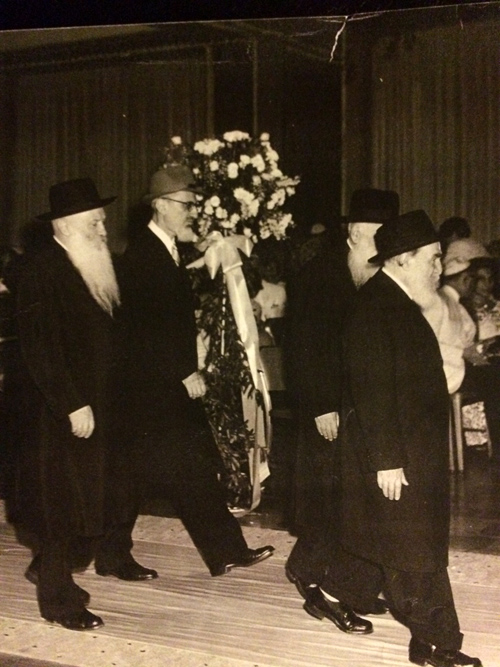

In older pictures you find rabbis walking down the aisle at weddings. Has anyone been to a wedding where this is still done?
3. Yeshiva University recently acquired the archive of the late Rabbi Louis Bernstein (1928-1995), an important Modern Orthodox pulpit rabbi in the second half of the twentieth century. The collection contains an interesting letter from R. Jehiel Jacob Weinberg, in which R. Weinberg mentions that R. Soloveitchik used to sometimes come to his shiurim at the Berlin Rabbinical Seminary. R. Weinberg also speaks about how outstanding R. Soloveitchik was, and how even in his younger years his greatness was recognized by all the Torah sages of the generation.[2]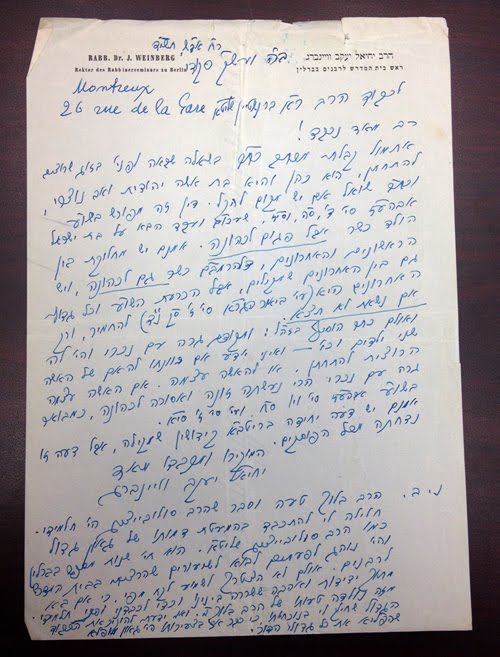

Also of interest in the collection is material relating to a controversial incident, or actually two incidents, that R. Bernstein was involved with. In 1985 R. Bernstein, who at the time was president of the Rabbinical Council of America, agreed to deliver a speech at the Conservative Rabbinical Assembly convention. That would have been controversial enough. However, things got even more heated when it was announced that the RCA would be reciprocating by having the head of the Rabbinical Assembly, Rabbi Alexander M. Shapiro, speak at the RCA convention.
This became a major dispute not just between the RCA and the more right wing elements in Orthodoxy, but within the RCA itself. The New York Times even covered the matter. See here. Unfortunately for R. Bernstein, the weight of all the opposition came down on him even though the decision for him to speak at the RA convention, and to have Rabbi Shapiro speak before the RCA, was not an individual decision but was voted on by members of the RCA’s Executive Committee.
In a future post I will discuss this matter in greater detail, and also deal with the role of R. Soloveitchik. For now, let me share this strong letter from R. Nissan Alpert to R. Bernstein, in which in addition to protesting Rabbi’s Shapiro upcoming speech, R. Alpert states that if the event goes forward he sees no way that he can remain a member of the RCA.[3]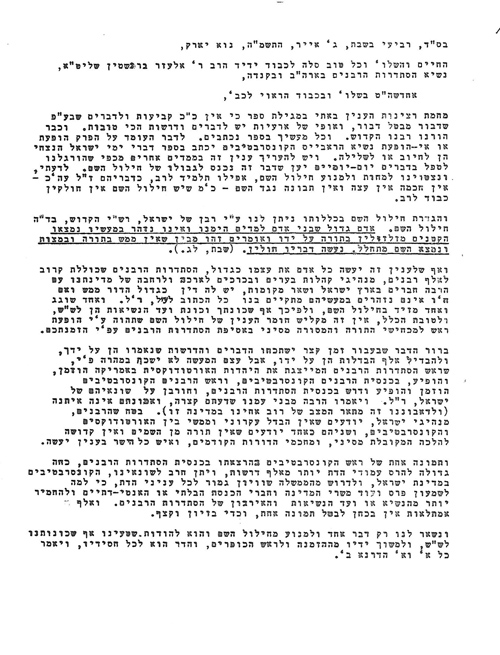

4. Recently, Ha-Mashbir, vol. 2, appeared, edited by R. Yissachar Dov Hoffman and R. Ovadiah Hoffman. This volume, which can be purchased at Biegeleisen, is dedicated to R. Ovadiah Yosef and is full of worthwhile articles. Particularly noteworthy are the contributions by R. Meir Mazuz, R. Baruch Simon (focusing on R. Ovadiah’s shiurim at Yeshiva University), R. Pinhas Zebihi on the practice in Gibraltar that men in mourning do not wear a tallit on Shabbat (actually, this is only the case for the first month of mourning), and an important and lengthy article by R. Eliyahu Kohen on R. Ovadiah’s attitude towards Zionism, the State of Israel, and the army. The various articles in the book are supplemented by notes from the two editors, each of whom is a scholar in his own right.
I would also like to call attention to the wonderful introduction to the book by R. Ovadiah Hoffman. He speaks about the need to reject religious extremism that leads to the delegitimization of Torah scholars just because they belong to a different camp. As I mentioned in my last post, this is a great problem in Israeli haredi society, and R. Ovadiah Yosef in particular was subjected to all sorts of attacks from small-minded people who could not recognize the simple truth R. Ovadiah Hoffman speaks about.
דא עקא, קול חרדה שמענו, פחד ואין שלום. בפרי מעללינו הובלנו לעידן של מצוקת הדעת, בו דעות מיעוט ודוקטורינות דתיות של רב אחד ותלמידיו שאינן עולות בקנה אחד עם ההשקפה המסורתית המקובלת של רב אחר וקהלתו, מבוססות ככל שיהיו, לא די שאינן מופרכות לפי כללי התורה ובאופן רציונלי אלא נדחות בשאט נפש ומבוטלות כלאחר יד, ופעמים בדעת קדומה של ביטול הדברים למפרע. . . . כל יום שני שומעים על עוד אדם ש”נפסל” או “נמחק” ונרדף עד לחייו בנסיבות עלובות. מלבד שהיום אין דנין דיני נפשות, גם אין אחידות או סמכות מקובלת או מועצה מוכרת בין כל קהילות ישראל, אפילו את”ל הוא חטא בניו ובנתיו מה חטאו? כמה משפחות נהרסות על חשבון הרודנות הזאת. ברור כי עוד לא זכינו להמשך הנבואה: ושקט ושאנן ואין מחריד (ירמיה ל, י).
I thought of R. Hoffman’s point this week when I received a copy of a new book that needs to be seen to be believed. (Thanks to Meir Yosef Frankel for sending it.) The title that appears on the top of each page is שרידי-אש זרה, and the book is designed to show that R. Jehiel Jacob Weinberg was a complete heretic. Interestingly, the author doesn’t know how old I am as he refers to me as a student of R. Weinberg: פרופסור אחד מתלמידיו הותיקים. I will discuss this book in more detail in a future post.Returning to Ha-Mashbir, the second page, where it gives information on how to submit material, states as follows:
בעז”ה ית”ש בכרכים הבאים יודפסו גם מאמרים שאינם מרוכזים על משנת רבינו, הלכה מנהג ומחקר, ויפתח”ו שערי”ה תמיד לציבור הרחב. . . . גם לתגובות ולביקר”ת מבוא פתחים, כולם יתקבלו בברכה.
I have underlined certain words that have double apostrophes. This is a sign that there is a melitzah play on words, something that the editor R. Ovadiah Hoffman is quite good with. The first example, ויפתח”ו שערי”ה תמיד, is a play on Isaiah 60:11: ופתחו שעריך תמיד. The second example, ולביקור”ת מבוא פתחים, is quite clever. It is a play on Proverbs 8:3: .לפי-קרת מבוא פתחים
5. The ever-productive Menachem Kellner has just published a new book, Gam Hem Nikraim Adam: Ha-Nokhri be-Einei ha-Rambam, available here. This is not just a work of academic scholarship, but is what we can call “engaged scholarship,” in other words, scholarship that is also intent on making a difference in the real world. One of the things that troubles Kellner about contemporary Orthodox Judaism (and he specifically deals with such figures as R. Shlomo Aviner, R. Hershel Schachter, and the authors of Torat ha-Melekh) is the recent turn (or perhaps better, return) to negative portrayals of non-Jews and their spiritual worth. Kellner discusses this in the first section of the book which is titled גילוי דעת, and you can read it here. See also his interview with Alan Brill here.
In the book, Kellner argues that Maimonides sees no essential difference between Jews and non-Jews, and it is this view that Kellner wishes his readers to adopt. He refers to it as “Maimonides’ universalism.” Responses to Kellner’s book will be of two types: Those that deal with his interpretation of Maimonides and those that focus on what Kellner has to say about the contemporary scene and how Maimonides relates to it. This is a very exciting book which further establishes Kellner as an important public intellectual, and shows us once again why Kellner’s work has had a significant impact on the study of medieval Jewish philosophy. I hope to take up some of Kellner’s points in a future post.
7. R. Simcha Feuerman has recently published Et Lifrosh ve-Et le-Ehov. This small book, available at Biegeleisen, focuses on issues of shelom bayit. What makes this book significant is that R. Feuerman is also a licensed social worker with great experience in the field. This makes his book different than many previous books on the topic authored by well-intentioned people who never actually had any practical experience. As is fitting for a book like this, sexual matters are also discussed, and R. Feuerman mentions (p. 13) that the book was shown to rabbis and dayanim. Yet other than R. Gavriel Zinner, who penned a haskamah, none of the other rabbis chose to be public in their support because of their fear of being attacked by extremists who don’t think that these matters should be publicly discussed.
R. Feuerman also deals with the matter of psychological counseling and possible conflicts between the role of the psychologist, who is not supposed to be judgmental, and the traditional obligation to rebuke those who are sinning. As part of this essay (pp. 88ff.), R. Feuerman discusses the value of Freud’s insights (and notes the advances that have been made since his time). I find this significant since for many in the haredi world, and they are the ones who will be reading this book, Freud is almost up there with Darwin when it comes to objects of derision. It is also worth noting that the author uses “lomdus” to make psychological arguments.
8. For anyone who hasn’t yet picked up my new book, Changing the Immutable, the YU Seforim Sale is selling it at a great price. See here. Regarding Changing the Immutable, let me also add that because of the book’s last chapter, a number of people have been upset and have even characterized me as a haredi apologist. That is not the case at all, and Adam Ferziger, in his just-published review here, gets it right.
[1] Also worthy of note is Ernest Gugenheim, Letters from Mir: A Torah World in the Shadow of the Shoah (New York, 2014). One piece of interesting information appears on p. 106, where in a 1938 letter Gugenheim writes: “Tomorrow [the day before Purim] will be a day of fasting. Here, they are rather meikil with respect to this viewpoint, and many bachurim, too weak, do not fast completely. It is true that every day for them is a day of half-fasting, such that they are quite weakened.” Thanks to Jonathan Hirsch for calling this passage to my attention.
[2] R. Weinberg’s letter is found in the Rabbi Louis Bernstein archives, box 3. I thank the Yeshiva University Archives for granting me permission to publish it.
[2] R. Weinberg’s letter is found in the Rabbi Louis Bernstein archives, box 3. I thank the Yeshiva University Archives for granting me permission to publish it.
[3] R. Alpert’s letter is found in the Rabbi Louis Bernstein archives, box 6, Folder no.: RCA etc. 1985. I thank the Yeshiva University Archives for granting me permission to publish it.
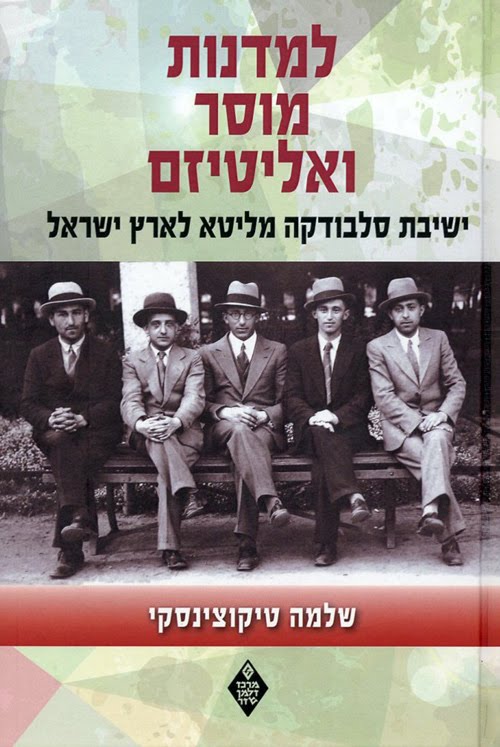
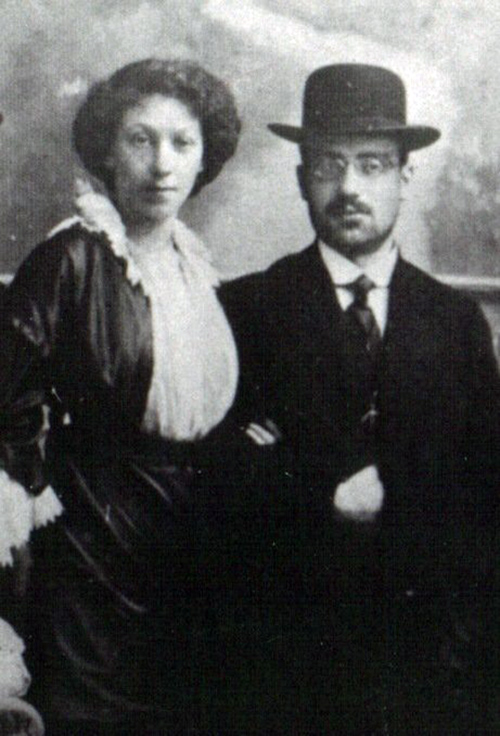
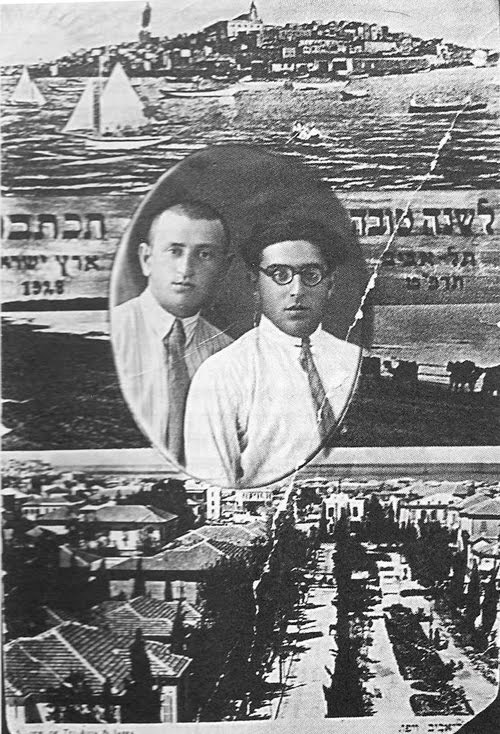




One thought on “Assorted Matters”
By some Syrian weddings the Rabbis do walk down the aisle at the beginning o the ceremony. The more formal people make a big deal out of it. Some Rabbis hate it and just make their way to the Chupa on their own.